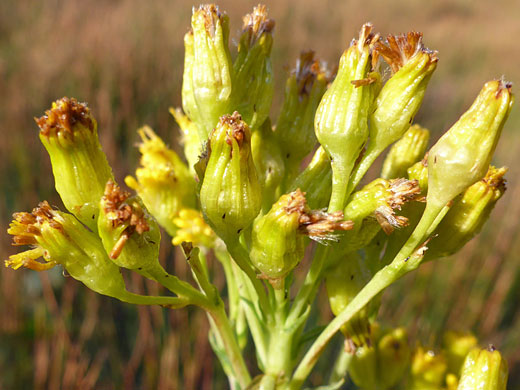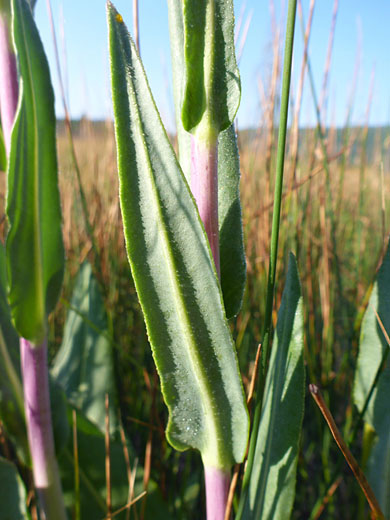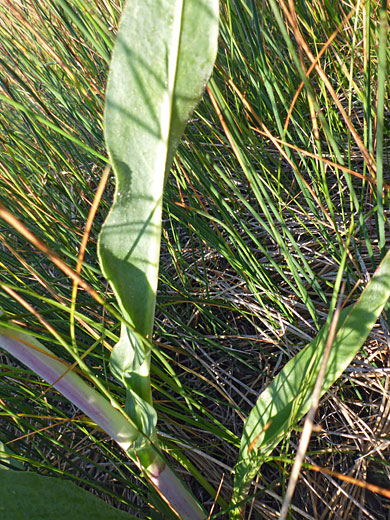Common names:
Water ragwort, alkali marsh ragwort
Family:
Scientific name:
Senecio hydrophilus
Main flower color:
Range:
From the Pacific states to the northern and central Rocky Mountain states
Height:
Usually up to 3 feet, sometimes twice this
Habitat:
Marshes, bogs, lake margins, streambanks, saline or alkaline locations; from near sea level to 8,200 feet
Leaves:
Oblanceolate to elliptic, up to 7 inches long and 4 inches across, with entire or toothed margins
Season:
May to August
As its common name implies, senecio hydrophilus inhabits moist to wet environments, including standing water. Stems are produced singly or in clusters of up to four; they are hairless, colored light grey-green to reddish. Leaves have a prominent, whitish center vein. Basal leaves are spreading, while those on the stem tend to angle upwards. Upper stem leaves are much reduced in size.
Flowerheads are produced in dense clusters, of up to 40, sometimes more. Ray florets may be lacking, but where present there are usually five, at most a quarter of an inch long and relatively broad. Disc florets number between 20 and 40. The phyllaries (usually 8, less often 13) are yellowish-green, sometimes with black tips. There are two to four short bractlets at the base of the involucre, often black-tipped.
Flowerheads are produced in dense clusters, of up to 40, sometimes more. Ray florets may be lacking, but where present there are usually five, at most a quarter of an inch long and relatively broad. Disc florets number between 20 and 40. The phyllaries (usually 8, less often 13) are yellowish-green, sometimes with black tips. There are two to four short bractlets at the base of the involucre, often black-tipped.
All Contents © Copyright The American Southwest | Comments and Questions | Contribute | Site Map




